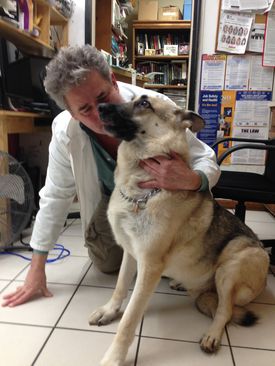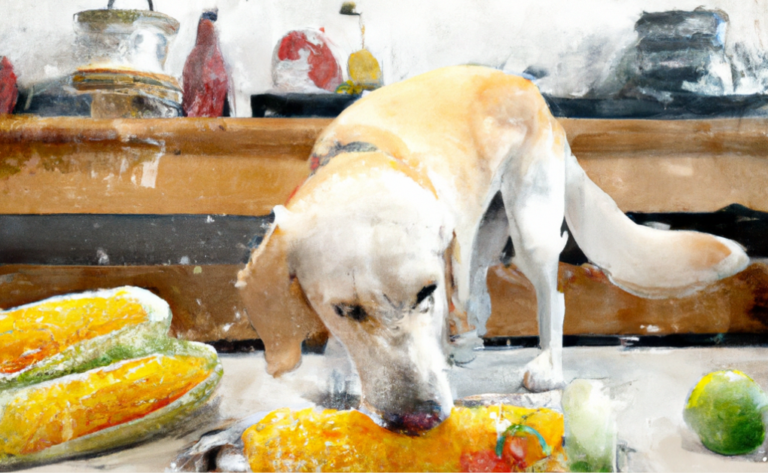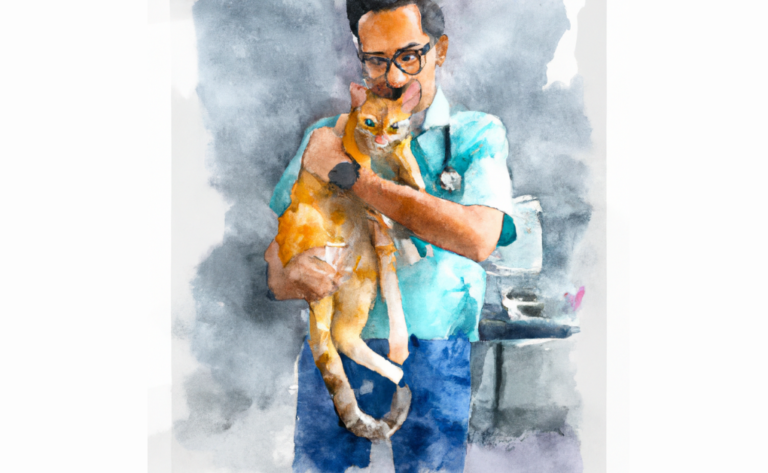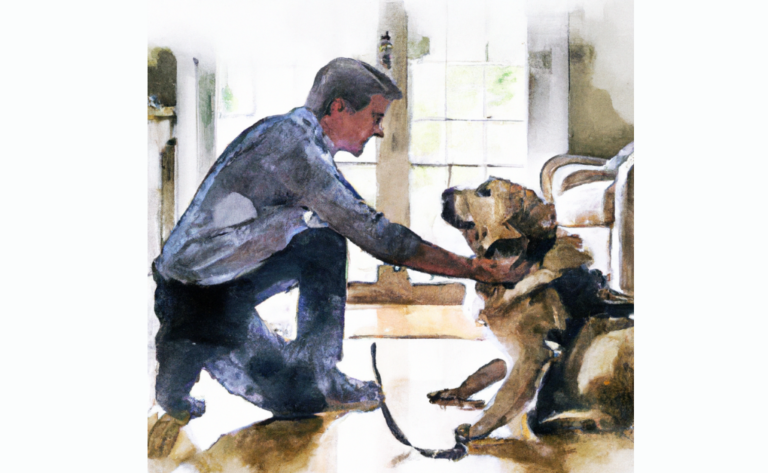Pet Dental Care Tips for Your Cat
Your cat’s dental health holds immense significance for several reasons. The mouth acts as a conduit to the rest of the body, and thus, inadequate oral health can prompt systemic health issues that affect the oral cavity and critical organs like the heart and kidneys. Bacteria from untreated dental conditions can traverse various body parts, potentially leading to severe complications.
Moreover, deteriorating dental health can cause discomfort, pain, and make your cat severely ill, making eating difficult. This could influence a cat’s quality of life, leading to a reduced interest in food, which can result in weight loss and nutritional deficits. Regular and daily cat dental care can stave off diseases such as gingivitis and periodontitis, which can cause tooth loss and oral pain and significantly impact a cat’s overall wellness.
Furthermore, the early detection of dental issues through consistent oral hygiene practices can allow for more effective management and treatment that is less invasive and expensive. A thorough dental cleaning routine will also assist in identifying other oral diseases like tumors, cysts, and dental fractures, which, if left untreated, can escalate into more grave health concerns.
Therefore, as pet parents, getting your cat used to having their teeth cleaned is crucial for maintaining overall health. This proactive approach helps prevent the onset of dental disease and remove dental tartar, especially from the outside of their teeth, ensuring they live a long, content, and healthy life.
Dental Plaque Accumulation in Your Cat’s Mouth
Plaque on a cat’s teeth can be a significant issue. It develops when bacteria in the cat’s mouth combine with food particles and saliva, forming a sticky film that attaches to the teeth. It is commonly found near the gum line but can accumulate between the teeth and other difficult-to-reach spots. Experts report that merely about 10% of cats can navigate through life without confronting some form of dental complication. This fact emphasizes the pervasive nature of dental issues and the importance of proactive dental care in cats.
Although plaque is soft and can usually be removed by brushing, the real issue is that if it isn’t cleaned away regularly, it can harden and turn into tartar. This much harder, yellow or brown substance firmly attaches to your cat’s teeth. Tartar can’t be removed by regular brushing and will require professional dental cleaning from a vet.
The buildup of plaque and tartar can lead to various dental issues. One of the most common is periodontal disease, a condition where the structures that support the teeth, including the gums and bone, become inflamed and infected. This can cause pain, make it difficult for your cat to eat, and eventually lead to tooth loss.
Further, the bacteria in the plaque and tartar can also enter your cat’s bloodstream through their gums. Once in the bloodstream, these bacteria can travel to other parts of your cat’s body, potentially leading to serious health problems, including heart, kidney, and liver disease.
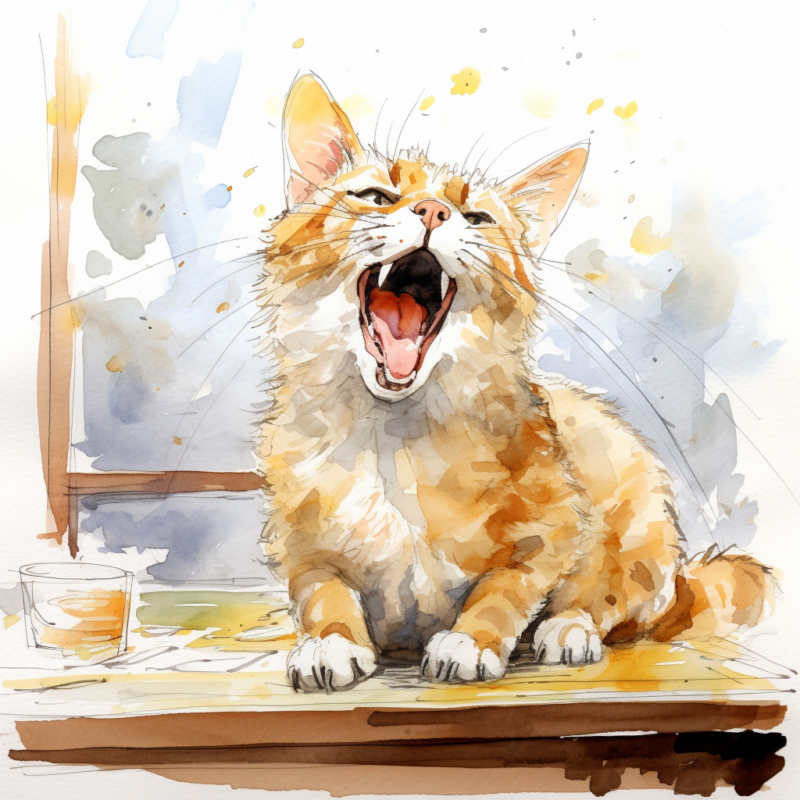
Therefore, your cat must maintain regular oral hygiene to remove plaque and prevent these health issues. These should include daily brushing and regular check-ups with your vet.
Guide to Brushing a Cat’s Teeth
Maintaining your cat’s dental health is an important aspect of its overall well-being, and brushing it regularly is crucial. While the task might seem overwhelming at first, it’s entirely achievable with the right strategy and a lot of patience.
- Equip yourself with the necessary supplies. A feline-specific toothbrush and toothpaste are critical. Cat toothbrushes are crafted to be softer and smaller than those made for humans, ensuring they fit a cat’s mouth perfectly. Feline toothpaste is available in flavors cats adore, like fish or chicken, and it’s vital to avoid human toothpaste as it contains ingredients that could be harmful to your cat.
- Before plunging into the brushing process, it’s essential to help your cat get used to the sensation of their mouth being touched and the taste of the toothpaste. Gently rubbing your finger along their gums and offering a smidgen of toothpaste can ease this acclimatization process.
- Once your cat is comfortable, you can brush their teeth. By applying a small quantity of toothpaste to the brush and delicately brushing their teeth in a circular motion, you should focus on the areas where the tooth connects with the gum line. The external surfaces of the teeth are the most critical zones to clean as they are the ones most prone to tartar accumulation.
- Maintaining a gentle and composed demeanor is vital throughout the brushing process. Ensure your cat’s brushing experience is positive by keeping your movements slow and delicate. Offer praise and immediately cease if your cat displays stress or anxiety. Establishing this as a routine is integral to safeguarding your cat’s dental health. Daily brushing is ideal, or as often as your vet recommends.
- Rewarding your cat post each brushing session will assist in creating a positive association with tooth brushing. This reward could be a treat or a beloved activity. Always engage in a consultation with your veterinarian before initiating any new oral hygiene regimen with your cat. They can provide specific advice and guidance to cater to your cat’s needs, including conducting a dental exam if multiple teeth are involved. In summary, managing your cat’s dental health is essential to managing your cat’s overall health.
Signs of Dental Disease
Recognizing the signs of dental disease in cats is essential for maintaining oral health. Spotting dental disease in cats can be challenging as they are notoriously good at hiding discomfort and pain. Nevertheless, several signs could indicate a potential issue with your cat’s oral health. These include:
- Bad breath: While it’s common for a cat’s breath to have a mild odor, unusually foul breath could indicate dental disease.
- Changes in eating habits: If your cat seems hesitant to eat, particularly dry food, or starts eating on one side of their mouth, it might indicate tooth pain or discomfort.
- Drooling or Pawing at the Mouth: Excessive drooling or frequent pawing at the mouth may be signs of oral discomfort.
- Red or Swollen Gums: Healthy gums are pink, so if your cat’s gums are red, swollen, or bleeding, it may indicate gum diseases such as gingivitis or periodontitis.
- Yellow or Brown Tartar on Teeth: Tartar buildup starts as a yellowish film on your cat’s teeth. It can harden and become a thick, brown coating if left unchecked.
- Loose or Missing Teeth: Adult cats should have 30 teeth. If you notice any missing or if any are loose or broken, it could indicate a serious dental issue.
- Weight Loss or Decreased Appetite: Dental pain can make eating difficult for a cat, leading to weight loss or a noticeable decrease in appetite.
- Changes in Behavior: Cats with dental disease may become irritable, exhibit decreased activity, or show disinterest in being stroked or patted around their head.
- Visible Discomfort: Visible discomfort while eating or grooming might indicate oral disease.
By proactively recognizing the signs of dental disease and seeking appropriate treatment, you can help prevent complications and ensure your cat’s dental health is properly maintained.
Regular Cat Dental Care and Checkups are Recommended
The importance of annual dental check-ups for cats cannot be overstated. In fact, dental disease affects a startling 50% to 90% of cats aged four and above. Therefore, ensuring your cat undergoes these annual dental examinations can help nip any dental conditions in the bud and contribute significantly to your cat’s longevity and quality of life.

Your veterinarian will thoroughly examine your cat’s mouth during an annual dental check-up. This starts with a visual inspection of the teeth and gums to check for visible signs of dental disease, such as plaque or tartar build-up, swollen or bleeding gums, broken teeth, or any other abnormalities. Your cat’s breath might also be checked for unusual odors, indicating dental disease.
Additionally, your vet may recommend a full dental cleaning. This usually requires anesthesia to keep your cat calm and still. While your cat is under anesthesia, the vet can perform a deeper examination and cleaning. This might include x-rays for issues below the gum line, such as root abscesses or bone loss.
The vet then proceeds to scale (remove plaque and tartar) and polish the teeth, similar to the process you might experience at your dentist’s office. If any severe issues are found, such as broken teeth or serious gum disease, further procedures might be necessary, including extractions.
Aside from identifying and treating existing dental issues, these check-ups allow your vet to advise on home dental care and prevention methods. This can include guidance on tooth brushing techniques, dietary adjustments, or dental toys and treats that can assist in maintaining good oral health.
Remember that prevention is key to your feline friend’s dental health. By incorporating annual dental checkups into your cat’s regular veterinary examination, you take proactive measures to ensure oral health and prevent future complications. So, remember to schedule that important dental checkup to keep your cat’s pearly whites and gums healthy and their overall health in check.
Products for Dental Care for Cats
When it comes to ensuring your cat’s dental health, several key dental care products can help keep their teeth and gums healthy. These products include:
- Toothbrushes
- Finger brushes that can be used if your cat is resistant to a regular toothbrush
- Pet-friendly toothpaste
- Dental treats and chews can also help reduce plaque buildup and freshen your cat’s breath.
Selecting dental care products designed specifically for cats is essential, as human toothpaste and dental products can be harmful if swallowed. By including these dental care products in your cat’s daily routine, you can assist in preserving their oral hygiene and preventing future dental problems. It is advisable to consult your veterinarian for the most suitable dental products for your cat’s requirements.
Dental Care Products for Cats
To ensure your cat’s well-being, it is important to prioritize their dental health. The Veterinary Oral Health Council (VOHC) has compiled a comprehensive list of approved cat dental care products to assist you in maintaining your feline friend’s oral hygiene.
- Toothbrushes: Look for toothbrushes specifically designed for cats. These brushes usually have soft bristles and a smaller head to clean your cat’s teeth and gums easily.
- Toothpaste: Use toothpaste formulated specifically for cats. Human toothpaste can be toxic for them. Cat toothpaste comes in flavors like poultry or fish to make brushing more enjoyable for your furry friend.
- Dental Gel: Dental gels are applied to your cat’s teeth and gums to help reduce plaque and tartar buildup. They typically contain enzymes that break down bacteria and freshen your cat’s breath.
- Oral Rinses and Sprays: These products help kill bacteria and freshen your cat’s breath. They are usually added to your cat’s drinking water or sprayed directly into their mouth.
- Water Additives: Water additives can help maintain your cat’s oral health by reducing plaque and freshening their breath. These additives are mixed with your cat’s drinking water.
These approved cat dental care products can significantly improve your cat’s oral health and prevent dental issues such as periodontal disease, tooth loss, and gum diseases. Regular dental check-ups and professional cleanings are also crucial for optimal oral hygiene. Always consult with your veterinarian for personalized advice and recommendations.
Toothbrush Alternatives for Cats
Cats are notoriously picky when it comes to oral hygiene, and sometimes brushing their teeth can prove to be a difficult task. Thankfully, there are alternatives to toothbrushes that can help maintain your feline friend’s dental health. These come in the form of oral sprays, rinses, and gels.
- Oral Sprays: These are applied directly to your cat’s teeth and gums. They contain ingredients that help to reduce plaque and tartar buildup, as well as freshen your cat’s breath. An example is “Petrodex Dental Spray for Cats & Dogs,” an effective spray that decreases oral bacteria.
- Rinses: Oral rinses or mouthwashes for cats are typically added to their drinking water. These rinses work by fighting bacteria in your cat’s mouth each time they take a drink. An example is “Nylabone Advanced Oral Care Liquid Tartar Remover,” which alters the pH of your cat’s saliva to control tartar production and curtail offensive mouth odors.
- Gels: Dental gels are similar to toothpaste but don’t require a toothbrush. You can apply the gel directly to your cat’s teeth and gums or add it to a treat or toy. Many cats prefer this method as it is less invasive than brushing. An example is “Oratene Veterinarian Maintenance Oral Gel,” which provides a safe, gentle, and effective way to combat oral complications.
Despite the convenience of these products, they should only replace regular brushing partially, especially if your vet has emphasized the importance of this activity. However, they can supplement brushing and help keep your cat’s mouth healthy between brushings. It’s always important to consult your veterinarian before introducing these new dental care methods.
Other Dental Needs of Your Cat
When it comes to maintaining your cat’s dental health, incorporating dental diets, treats, and supplements into their routine can make a significant difference. Veterinary recommendations often highlight the following options as effective in reducing plaque, tartar, and bad breath, while promoting good oral health.
Dental Diets for Cats:
- Hill’s Prescription Diet t/d Dental Care: Hill’s Prescription Diet is a clinically proven formula to reduce plaque, stain, and tartar buildup. The kibble’s unique shape works like a toothbrush as your cat chews.
- Royal Canin Veterinary Diet Dental Dry Cat Food: Royal Canin Dental Diet is designed to promote oral health with a unique kibble shape and texture that encourages chewing.
- Purina Pro Plan Veterinary Diets DH Dental Health Feline Formula: This diet is specifically formulated to offer dietary benefits that support healthy teeth and gums.
Dental Treats for Cats:
- Greenies Feline Dental Treats: Greenies dental treats have a crunchy texture and unique shape that help clean your cat’s teeth by reducing tartar and plaque.
- Virbac C.E.T. Oral Hygiene Chews: These chews are coated with a dual-enzyme formula to prevent plaque formation. They are also highly palatable.
- DentaLife Dental Crunchy Cat Treats: They have a porous texture and help clean teeth and freshen breath.
Dental Supplements for Cats:
- Vetriscience Laboratories- Perio Support: This powder supplement can be added to your cat’s meal. It’s designed to support periodontal health.
- ProDen PlaqueOff Powder: A completely natural product, it is a supplement that reduces bad breath, plaque, and tartar in cats.
- Maxiguard Oral Gel: This veterinary oral gel is a tasteless compound that helps clean the teeth and oral cavity.
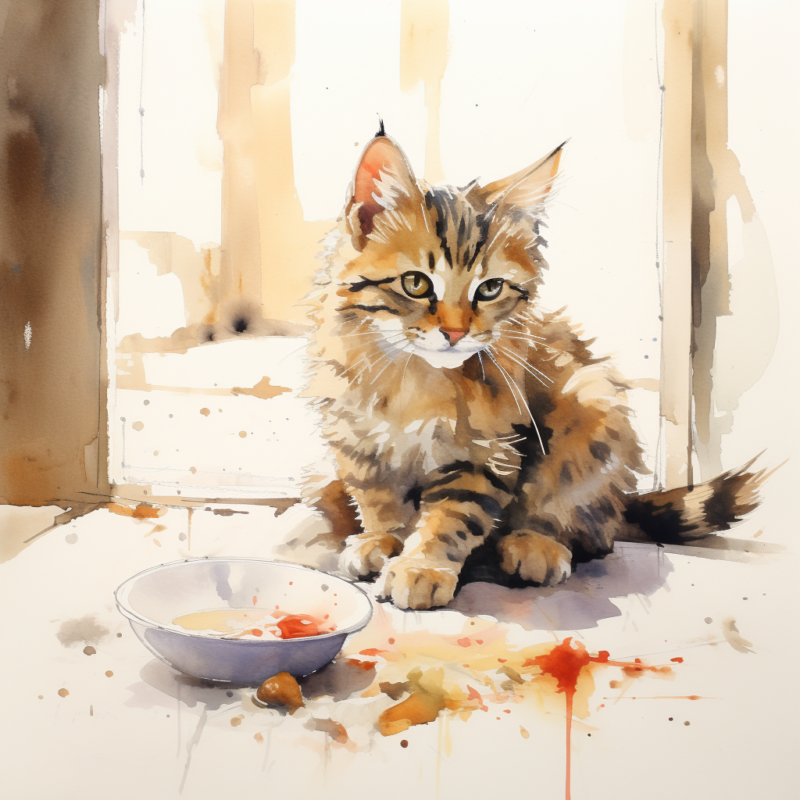
Remember to consult with your veterinarian before introducing new products or dietary changes to ensure they are appropriate for your cat’s health needs.
Dental Chews for Cats
Regular brushing and dental cleanings are essential When caring for your cat’s dental health. However, experts agree that dental chews for cats can also play a role in promoting oral hygiene. While they may not be as effective as brushing, they can help reduce plaque and tartar buildup.
- One popular option is the Petstages Catnip Toy Dental Chews. These chews are designed to be safe and help clean your cat’s teeth and gums. The unique shape and texture work to remove plaque and massage the gums, promoting good oral health. Plus, the added catnip makes them irresistible to your feline friend!
- Another option is the Orkakat Catnip Wiggle Worm Kitten Teething Toy. This interactive toy provides entertainment for your kitten and contributes to their oral health. The soft, chewable material helps massage their gums during the teething phase and can aid in reducing plaque buildup.
Dental chews should not be used as a substitute for regular dental care, but they can be a beneficial addition to your cat’s oral hygiene routine. It is recommended to consult your veterinarian to select the most suitable dental chew for your cat’s needs. You can maintain your feline companion’s dental health for years with proper dental care and regular check-ups.
Do’s and Don’ts When Brushing Your Cat’s Teeth
When brushing your cat’s teeth, there are certain key dos and don’ts to ensure a safe and effective dental routine.
Dos
- Use the Right Tools: To properly care for your cat’s teeth, use a toothbrush specifically made for cats with smaller and softer bristles. Additionally, cat-specific toothpaste is available in flavors like fish or chicken, which can enhance the experience for your cat.
- Gradually Introduce Toothbrushing: Start by acclimating your cat to having its mouth and gums touched before introducing the toothbrush and toothpaste. This gentle introduction can make the process less stressful for your cat.
- Brush in a Gentle, Circular Motion: When brushing, do so gently and in a circular motion to cover the teeth and the gum line effectively. Don’t rush the process; gradually increase the number of teeth you brush as your cat becomes comfortable with the routine.
- Reward Your Cat: Always reward your cat with praise, petting, or a small treat after each brushing session to reinforce the positive association with tooth brushing.
Don’ts
- Avoid Using Human Toothpaste: Don’t use human toothpaste for brushing your cat’s teeth. Human toothpaste can contain ingredients like fluoride, which is harmful to cats. Always opt for cat-friendly toothpaste.
- Don’t Force the Process: If your cat resists tooth brushing, don’t force the process. It can take time for your cat to get used to this new routine. Patience and consistency are key.
- Remember Regular Vet Checkups: Even with home brushing, take regular dental checkups with your vet. They can spot potential issues early and provide professional cleanings.
Remember, a successful cat dental care routine starts with patience, the right tools, and a gentle, gradual approach.
Frequently Asked Questions
Disclaimer: The information provided on this veterinary website is intended for general educational purposes only and should not be considered as a substitute for professional veterinary advice, diagnosis, or treatment. Always consult a licensed veterinarian for any concerns or questions regarding the health and well-being of your pet. This website does not claim to cover every possible situation or provide exhaustive knowledge on the subjects presented. The owners and contributors of this website are not responsible for any harm or loss that may result from the use or misuse of the information provided herein.


